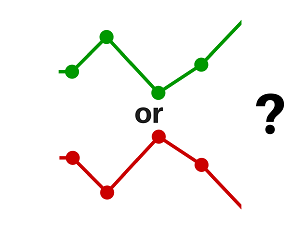 Why would anyone choose the worst performing countries? We know that chasing the countries with the best returns doesn’t pay off.
Why would anyone choose the worst performing countries? We know that chasing the countries with the best returns doesn’t pay off.
Mean reversion is tough on investors who ignore their plan and chase returns.
We make it harder on ourselves by investing with a wandering eye. Markets revert because investors act irrationally, ditch their plans at the worst possible times, and chase performance. These investor mistakes are a big argument for a simple buy and hold strategy which works well over time.
What if you tried a different approach? A contrarian might look at the biggest losers.
When I ran the numbers for the top five countries, I ran the worst five countries too. The results below show how mean reversion works on the worst performing country funds versus owning an international index fund.
Buy and Hold vs Picking the Worst Countries
To show the contrarian view of picking the worst returns, the MSCI EAFE represents a buy and hold strategy for an international index fund. The Worst 5 Countries is the contrarian play. Every January 1st you rebuild your portfolio with the five worst performing countries over the past five years.
| Buy and Hold vs Picking Worst 5 Performing Countries for 1 Year | ||
| MSCI EAFE | Worst 5 Countries* | |
| Annual Return | 11.17% | 15.29% |
* Developed Countries ex U.S. and Canada over 39 year period from 1975 – 2013
The same reversion that hurts performance chasers, helps the worst performers. Over the long run picking the worst performing countries beat the index by about 4% annually. Of course, you only saw those results if you stuck with this process for 39 years.
Broken down on a year over year basis, you might second guess the results. Investors who put more importance on one year returns will only see a failed a strategy because it didn’t work this year.
In fact, the Worst 5 Countries worked 23 of 39 years (59% of the time). Like all other strategies, buy and hold works best some years.
Beyond One Year
When a strategy seems to work, we like to test its limits. The table below shows what happens when you stick with the worst performing countries for a few more years.
| Average Annualized Returns When Held for the Following Years | ||||
| 2 Years | 3 Years | 4 Years | 5 Years | |
| MSCI EAFE | 11.94% | 11.40% | 11.25% | 10.98% |
| Worst 5 Countries | 15.68% | 15.23% | 14.60% | 14.26% |
You can see that holding the worst performers for several years offers better results than the index. As expected, returns diminish over time.
The timing will never be perfect, but your risk increases as you drag it out further. The above average returns you get in the first few years leads to higher valuations, higher risk, and a higher chance that market reverts back to the average. It’s very much like driving at night without headlights. Something bad is likely to happen the further down the road you go.
The fall can happen slowly, but it usually happens fast. Markets take years to build up and months to tear down. And those markets never stay down forever. Only we ignore the fallen markets because who wants to own the biggest losers that just lost them money.
The best plan you can have is one that manages risks, not returns. When you try to manage returns, risk tends to get lost or ignored. If you manage risk, the returns will show up over time.
One way to do this is with a simple static allocation to stocks and bonds. Another is to build an allocation that systematically adjusts to the constantly changing risks of the market.
An argument is often made that being active with your investments hurts your returns. This is true when you put more importance on one year returns, let behavior run your money, ignore risks and costs, and ditch your plan when it doesn’t work. You can say the same about buy and hold too.
You can accept whatever the future brings or you can consider the risks created by recent past performance and make adjustments accordingly. You can keep it simple with a buy and hold strategy with regular rebalancing or complicate it with a systematic process of weighting toward the worst performers. The only way either strategy works is if you stick to the plan.
